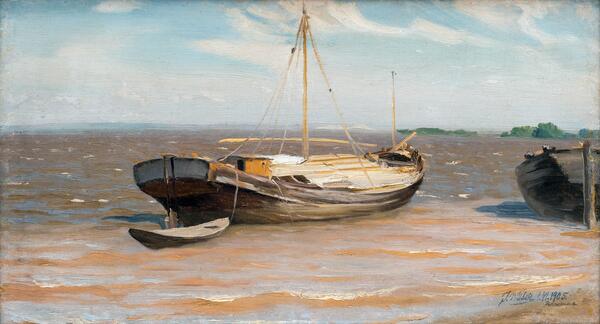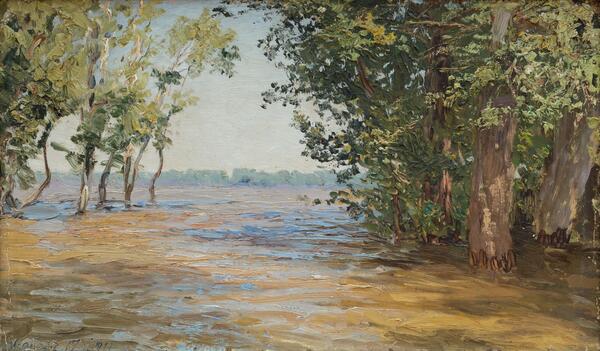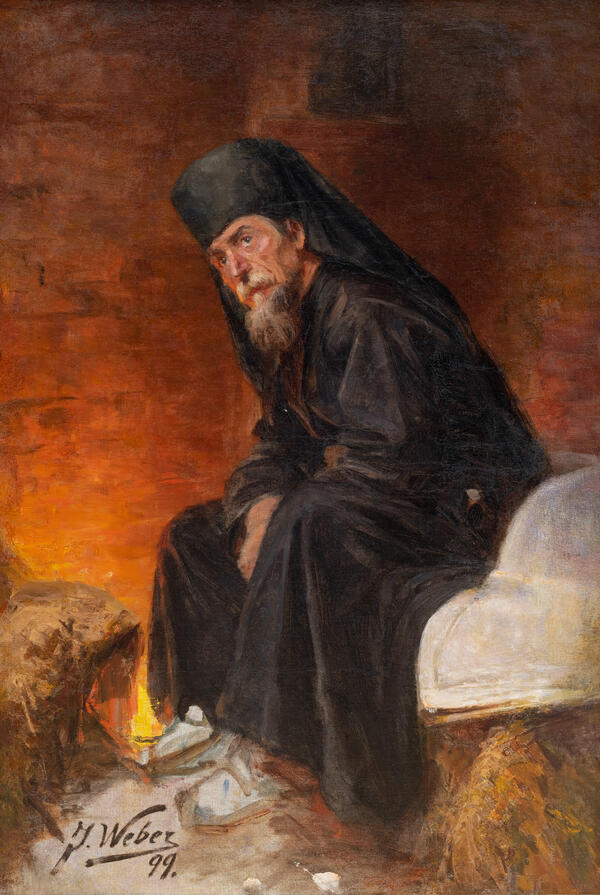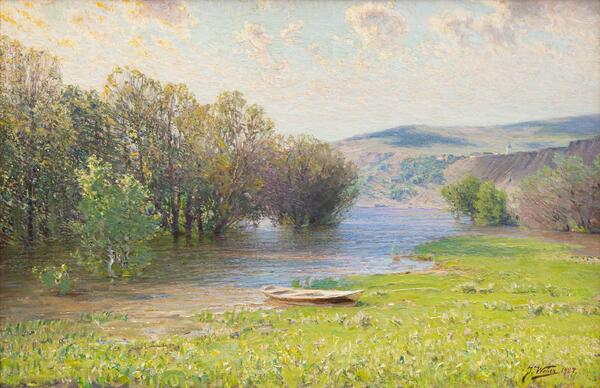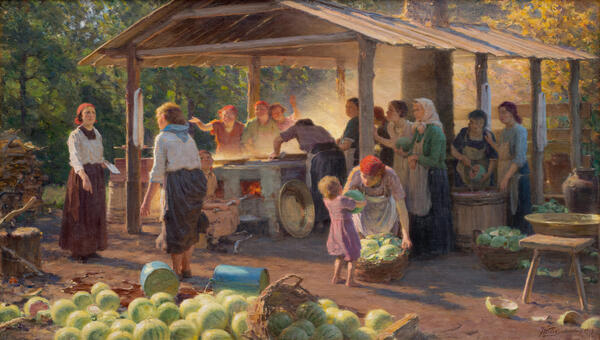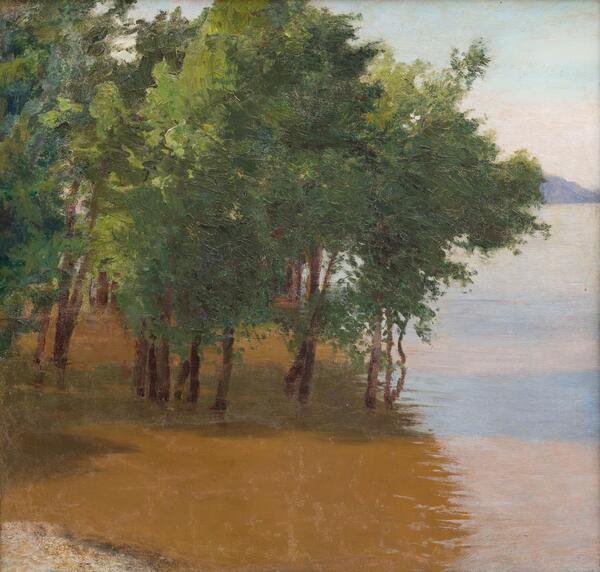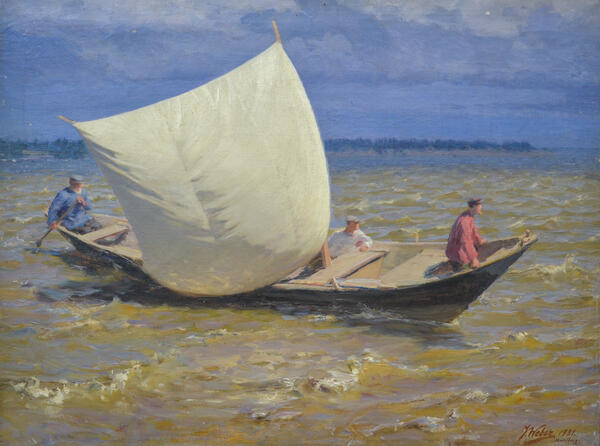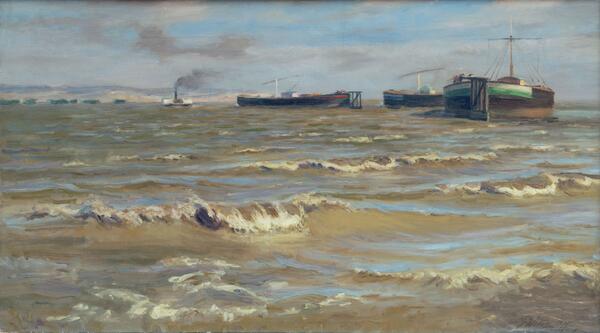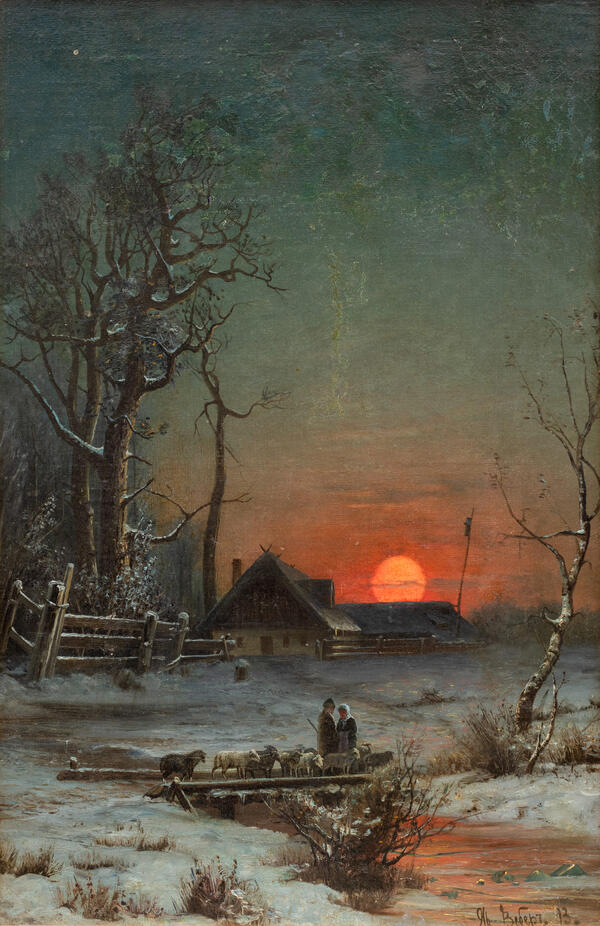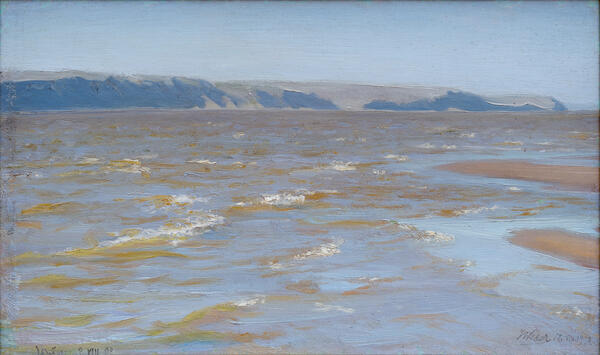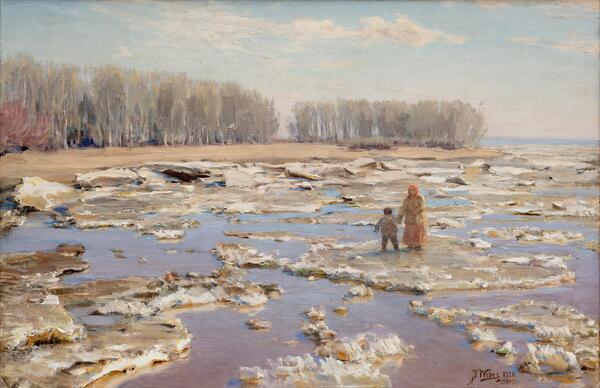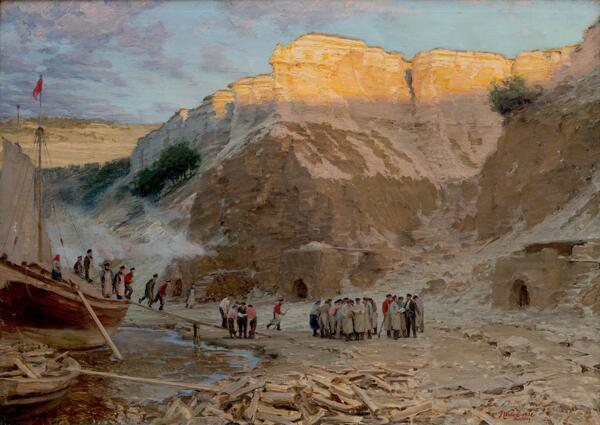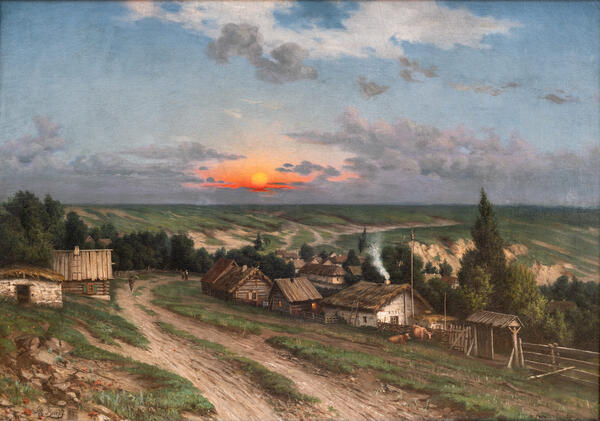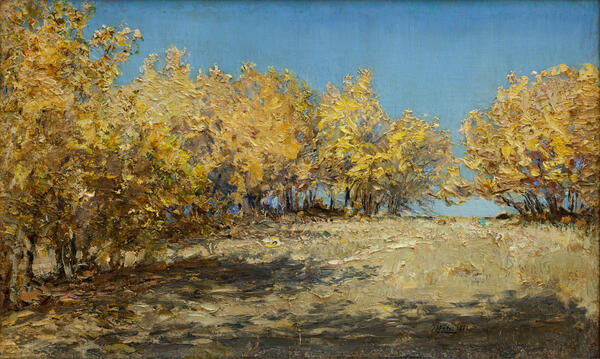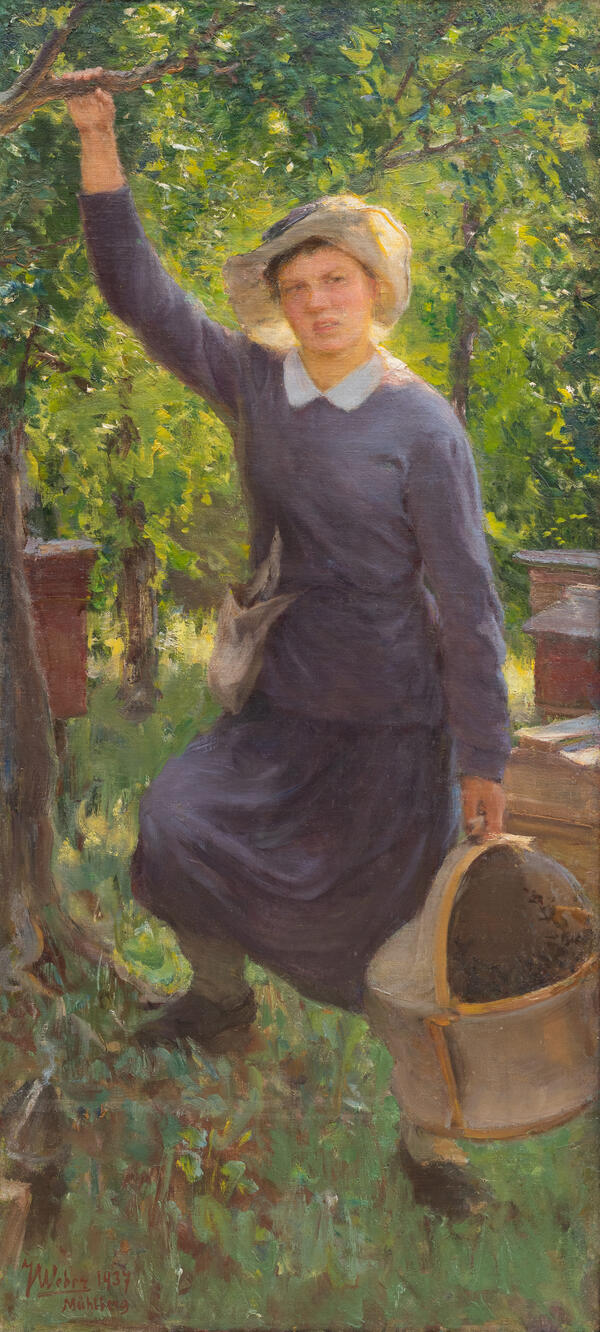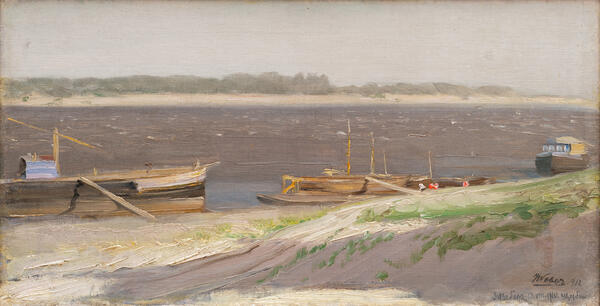One of the valuable sources in studying the biography and legacy of Yakov Yakovlevich Weber is a handwritten autobiography of the artist, written between 1951 and 1954. After graduating from the Penza Art School, Yakov Weber, on the recommendation of his teacher Konstantin Savitsky, he continued his studies at the Imperial Academy of Arts in St. Petersburg. Weber came to the capital in 1901. The northern city made a greater impression on the provincial artist than Moscow once did. By his own admission, St. Petersburg was “harmonious in lines and colors” and was much different from the “multicolored confusion of Moscow”.
Weber spent his summer vacations in his native land during all his years of study. The Volga was the artist’s main source of inspiration. His Volga studies evoked genuine admiration of both his fellow students and teachers. The study “Ferry” displayed in the exhibition of the Engels Museum of Local Lore was painted during this period. This is evidenced by the red stamp of the Imperial Academy of Arts in the left corner of the canvas. The canvas conveys expressively the state of the Volga nature before a thunderstorm, which is achieved by the contrast of light and shadow. The artist uses a diagonal composition to capture the movement. The artist shows only a part of the ferry with the staffage figures of workers hurrying away from the thunderstorm. The high horizon, dark water, stormy sky and the solar flare of the distant shore indicate the movement of the wind and the imminent change of weather and create a romantic mood. In his best landscapes of the early 20th century, difficult to be described as student studies, Weber shows himself as a mature artist, professionally skilled in the art of painting. His early works reveal clearly his individual painting style.
The study “Ferry” was among the ten works of the
artist donated to the museum by his son Alexander Yakovlevich Weber in 1966. In
1992, it was restored at the Alexander Radishchev Art Museum in Saratov by the
artist Vladimir Solyanov.



